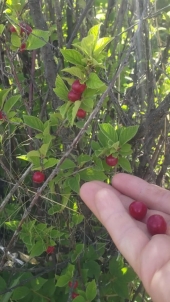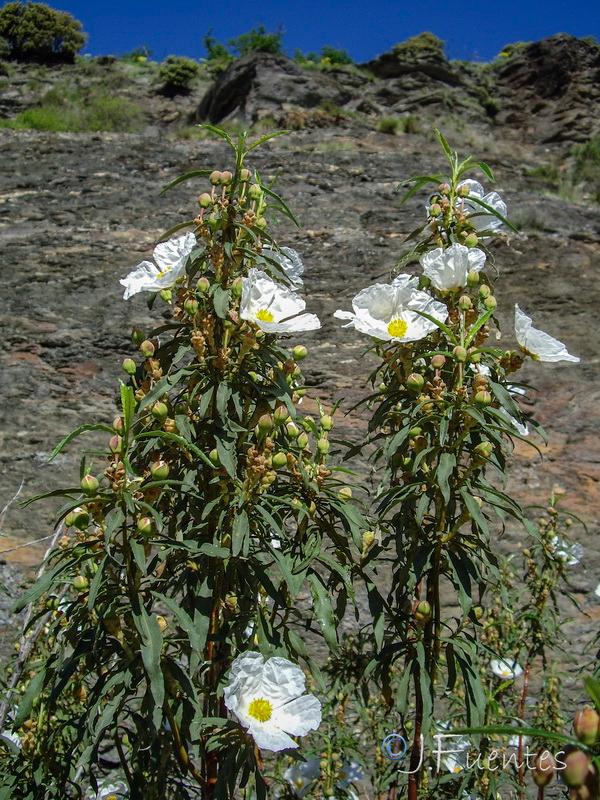


Rebekah Harmon wrote:American Black Nightshade?? Hi foragers! I don't know what this little black "berry" is, for sure. I think I have seen it around this time of year. I thought I had planted huckleberries in this space, but this "weed" grew instead. The little tasty-looking fruits taste as plain as tomatillos.
Anyone else recognize them? What do you do with them, if so?
I decided to try them in a tomato sauce. They turned the sauce a beautiful purple! Will it be tasty? I don't know!


Konstantinos Karoubas wrote:Thank you L. Johnson,
Very interesting; are the old growth forest trees all gone? Are there any patches of forest with oak, maple and other broadleaf trees?
Maybe around monasteries…
Here the old forests were destroyed over a period of 2500 years. The oak trees were cut again and again, and the conifers came to fill the empty space. Now the pine trees are dying from fires and diseases.
It's an opportunity to plant trees other than conifers. An opportunity to turn a problem into an asset.
In Japan it happened over a much shorter period; the same end result...degraded landscapes. It's an opportunity to aggressively remove the cedar trees and plant maples and oaks.
I am amazed how much money and energy is spent on weapons of violence and in relation how little is spent to heal past mistakes; drones and weapons for destruction but not for food, reforesting and peaceful uses.
On the olive trees...I/we should collect olives from 3 or more different olive trees, and mix them together, so each planting hole has olives from different trees. Give them a better chance to sprout and grow.
Your land sounds like your piece of heaven on earth...enjoy it, life is good and it's short !!!
Kostas



L. Johnson wrote:Looking forward to hearing the results of the olive plantings next year. I'm very curious about different tree planting regimes. It seems like in nature there are two basic patterns,
1. Tree drops fruit or nut, seeds establish, trees gradually spread.
2. Tree makes fruit, fauna eats fruit, deposits seed in dung, seed establishes somewhere farther away.
I assume scarification happens more in 2 than 1 and be more important for trees who rely on that method.
Do you have thoughts on this matter in your area?


L Anderson wrote:When I lived in Bakersfield, CA, I had two work buddies who each had several pomegranates in their yards. I held an annual jelly party and they would bring boxes of their pomegranates, and any interested others would bring their labor.
One guy pruned his religiously and had 5 of 6 nice trees. The branches eww sturdy enough to prop a ladder against. His fruit was really big.
The other guy left his plants bushy. His fruit was a lot smaller.
Both ended up with lots and lots of fruit.
That’s the extent of what I know.
Oh yeah — a year or to before moving to a gentler place I planted a pomegranate (1 gal size from a nursery). The next summer I already had 3 poms.
I’m thinking they like their summers dry..

Myron Platte wrote:https://permies.com/t/45238/Siberian-Pea-Tree-aka-Caragana#1224268
Pregermination treatments and germination testing.
For a leguminous species, Siberian peashrub does not have a
very impermeable seedcoat. Untreated seeds will germinate
in 15 days after sowing, but the best germination (87 to 100% in 5 days)
can be obtained by soaking seeds for 24 hours in cold or hot (85 °C) water.
Successful germination has also been reported after acid scarification,
cold stratification for 2 weeks, or fall planting.
Certain pesticides,such as captan and thiram, can apparently increase
germination, possibly by inhibiting seed-borne disease.
The official testing prescription for Siberian peashrub seeds
calls for clipping or filing through the seedcoat on thecotyledon end,
soaking these seeds in water for 3 hours,then germinating them for 21 days
at alternating temperatures of 20/30 °C. Germination tests have also
been carried out in flats of sand or perlite and in Jacobsen germinators
for 14 to 60 days at the same alternating temperatures.
Germination after 25 to 41 days averaged 45 to 72% and 55 to 100% after 60 days.
Pods and seeds of pea shrub are both edible. Oil can be extracted from the seeds which is also edible.
As the seeds have a bland taste, it tastes bests when spiced up. Young pods are eaten as cooked vegetables.

Cj Sloane wrote:Any one know how old or how tall before they flower?